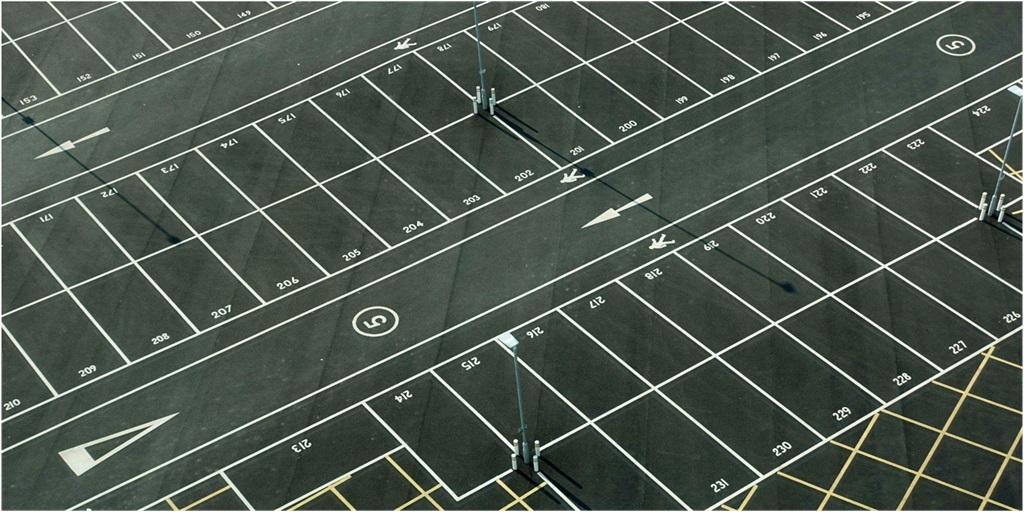Innovative solutions to this problem include smart parking, there is the cusp of a momentous shift to this new urban convenience, where there will be an unprecedented paradigm shift for parking management, the resolution of many existing problems within the parking industry, and a brand new post-industrial interpretation on urban mobility. The article features the recent development of innovative parking technologies to enhance parking efficiencies with better experiences and further presents the applicable use cases in the market. Moreover, it introduces the latest trend in the “sharing economy” phenomenon, where space owners’ parking lots top the list of rented-out spaces, creating a brand new solution for smart parking ecosystems.
The Mechanics Behind Smart Parking Technology
Smart parking systems employ IoT sensors, real-time data analytics, and mobile applications to indicate available parking spaces dynamically. This integration enables the ‘frictionless parking’ experience, as seen by projects such as San Francisco’s SFpark, which makes real-time parking information from sensors and meters available to drivers through an app, cutting search times in half.
Alleviating Parking-Related Stress
The impact of smart parking solutions on reducing parking-related stress is notable. Real-time information about parking availability dispels the uncertainty and frustration associated with traditional parking, with studies indicating a potential reduction in search times by up to 43%.
Enhancing Urban Traffic Flow
Their essential function is to tell drivers where to find available parking spaces, thus reducing the number of cars that are in circulation looking for spaces. The reduced traffic of vehicles searching for a parking spot will lead to a smoother vehicular traffic flow. Current research suggests that smart parking could help to reduce the level of traffic congestion between 14% to 30%, and therefore it is a beneficial tool for urban planning.
Economic and Environmental Benefits
Smart parking systems offer significant economic and environmental advantages by reducing the time and fuel expended in parking searches. This not only results in cost savings for drivers but also contributes to environmental sustainability through reduced carbon emissions.
Case Studies: Smart Parking in Action
Cities like Barcelona have successfully implemented smart parking solutions, such as the “B:SM” parking initiative, demonstrating the tangible benefits of these technologies in improving parking efficiency and user experience.
Renting Parking Spaces: A Smart Parking Innovation
Another trend that is emerging in smart parking is renting out parking spaces. This is a new parking model in parking management. The concept is to allow private owners of parking spaces to rent their unused spaces to others using smart parking apps. Drivers with this kind of space log onto an intelligent parking app and start making money. From this, we can see that parking space can now be viewed as a ‘property’ with a yield because it can be rented out.
This co-option of the naturally existing parking space capital, along with new profit streams, creates a win/win situation for parking space owners. For drivers, it means more options for a parking space, probably closer to the places they wish to go, and possibly at a cheaper cost. Here we see a good example of how smart parking is highly flexible in accommodating the various styles of parking policy.
For individuals in search of a consistent parking solution, exploring options for monthly parking, such as those offered by the Secure Parking service, can provide the desired convenience and security. Monthly parking arrangements can be particularly advantageous for commuters or residents in busy urban areas where daily parking can be a challenge. By securing a parking spot on a monthly basis, drivers can enjoy the peace of mind that comes with knowing they have a reliable and secure parking space available to them, circumventing the daily hassle of searching for parking. This approach not only saves time but also potentially reduces the stress associated with finding daily parking in high-demand areas.
Leveraging Data Analytics for Optimized Parking Management
Analytics plays a big role in this aspect of smarter parking: there are all kinds of questions that can be asked and answered through aggregation and analysis of parking data. How are parking spaces used? Are they being overbuilt or underbuilt? When is parking used at a premium? How long are people parking for? Where is walking taking place (which is a key part of managing congestion)? There are a lot of issues where parking data can be applied. Parking analytics can offer up in advance the parking spaces that are available or those that are not. To make use of these opportunities, an information platform where data can be assembled, combined, and analyzed is required. Smart-parking systems are not new, but the management and commercial promise of data analytics are.
Enhancing User Experience through Feedback
Incorporating user feedback mechanisms into smart parking apps and systems is critical for continuous improvement. The most straightforward feedback we can elicit comes from the users themselves and takes the form of feedback on user experience and ease of use. It can help to drive iterative development to ensure that smart parking technologies comply with changing user needs and expectations.
These developments in data analytics and user engagement are essential for the transformation of smart parking, enabling us to move to a more digital, connected, responsive, and user-experience-led approach to on-street parking in our towns and cities.
The Imperative for Smart Parking Adoption
The implementation of smart parking is no mere convenience. Instead, its likely effect on day-to-day life is the final component in the grand transformation of cities to better-planned and more sustainable urban environments, achievable through a perfect amalgamation of technology and forward-thinking urban planning.
Conclusion: The Evolving Landscape of Smart Parking Solutions
One among them is the advent of ingenious smart parking that entails sophisticated ways of coding and decoding the material and conceptual complexities of urban automobility while seeking to envision new solutions to parking on urban ground. Car rent will continue to reinvent itself. It might just turn out to become a radically new – and possibly fundamental – urban parking model: a form of supply and demand that comes and goes in increasingly intricate and fluid terms.
The use of data analytics to manage to park integrates users’ feedback into the functioning of existing systems as one of the first steps towards the development of an infrastructure that is more responsive, more intelligent, and uses the broader set of data it generates not only to evaluate its own performance, but to optimize management of parking overall, based on the user’s ongoing patterns of use and better anticipating future needs. Users’ views also feed into the insights of those who collaborate to improve the systems, ensuring and expanding their responsiveness to users’ needs and preferences in real and actionable ways. This increases satisfaction and use.
And the road to much more capable parking prompts won’t end there. Signaling technologies will only continue to accelerate, forever recalibrating itself to the context of its users. Data-driven solutions and human-centered design will advance together, in both accuracy and care, eventually allowing our cities to reclaim their magic for their users, for the visitors, the residents, the workers, the parkers, and the passers-by.



